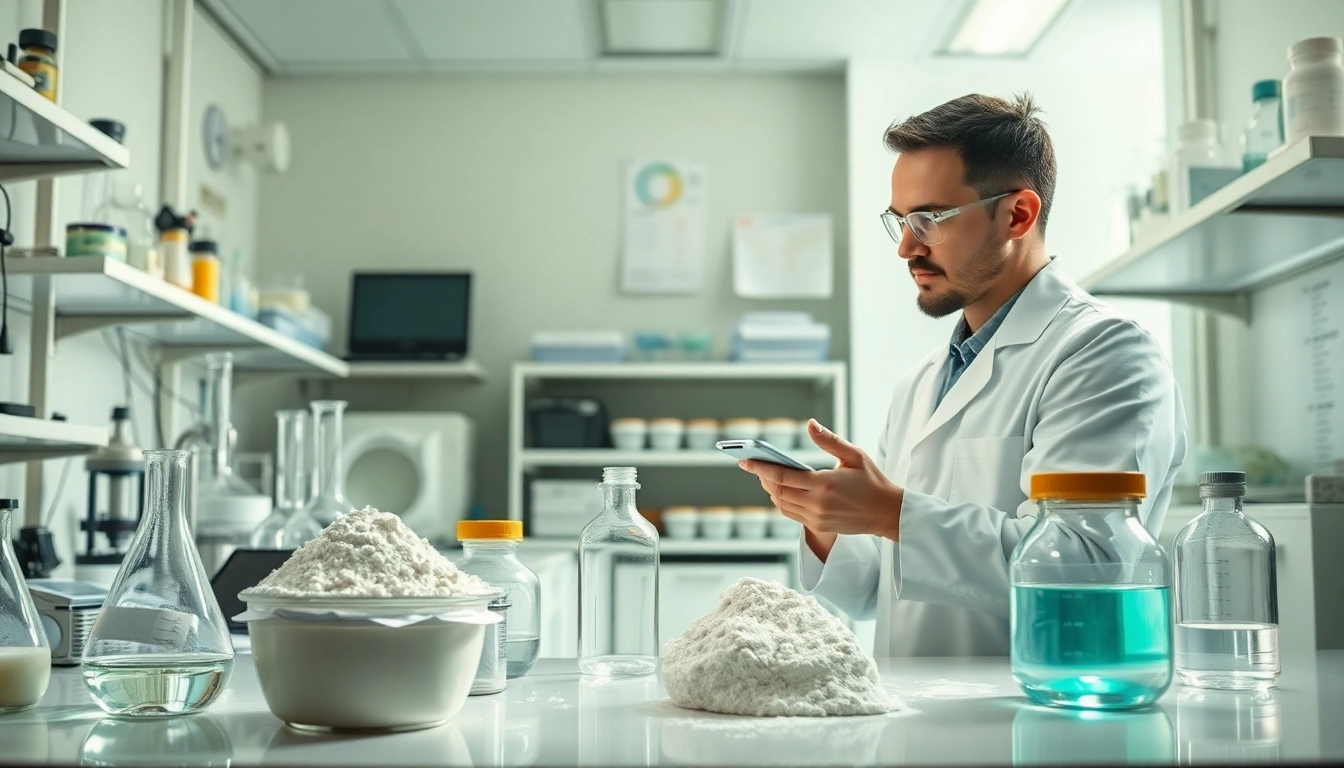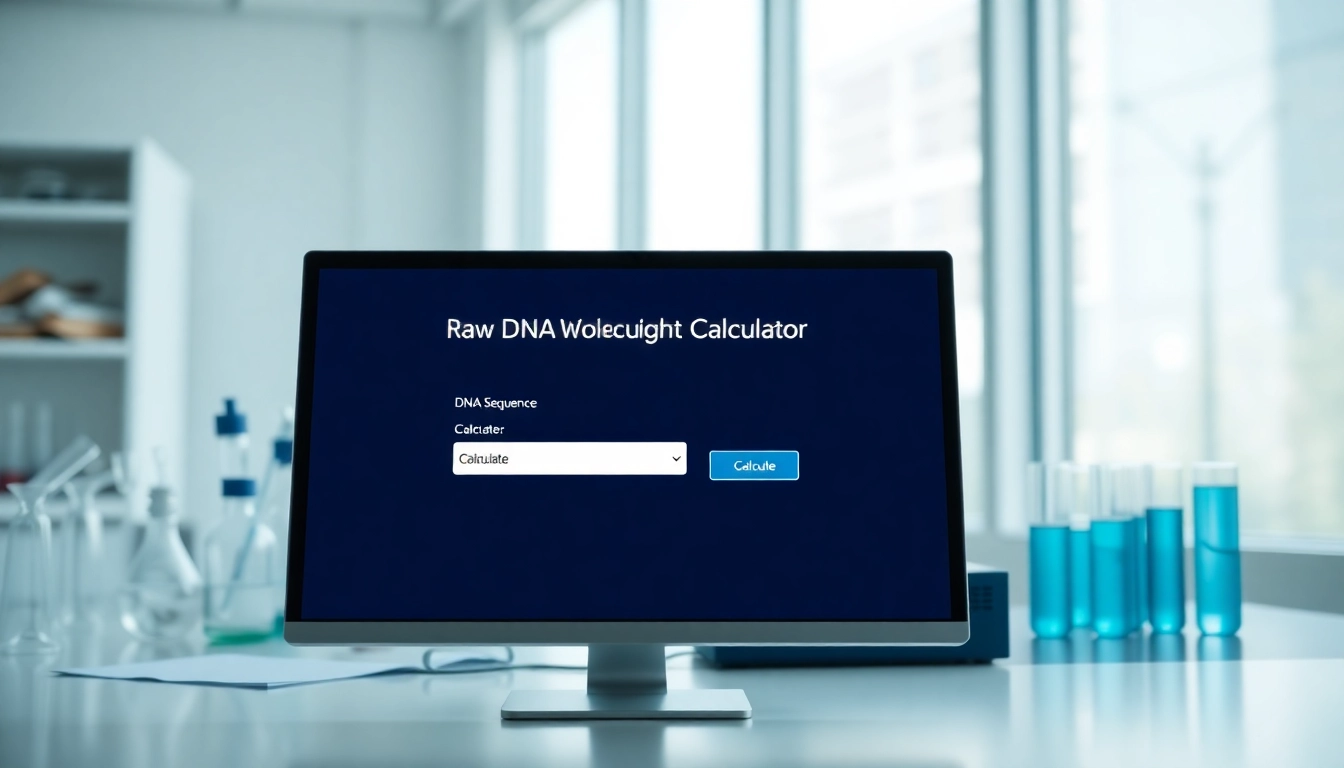Understanding Molarity: The Basics of the Molarity Calculator
In the realm of chemistry, understanding solutions and their concentrations is vital. One of the primary concepts to grasp is molarity, a unit of concentration often used to express the amount of a solute in a given volume of solution. By employing a Molarity Calculator, chemists can accurately determine molarity, mass, and volume needed for preparing chemical solutions, making it an indispensable tool in both academic and industrial settings.
What is Molarity?
Molarity, also referred to as molar concentration, is the number of moles of solute present in one liter of solution. The symbol for molarity is “M,” and it represents the concentration of a solution in terms of moles per liter (mol/L). For example, a 1 M solution of sodium chloride (NaCl) contains one mole of NaCl dissolved in a total volume of one liter of solution. Molarity is essential for understanding chemical reactions, as it enables predictions about how reactants will interact.
The Molarity Formula Explained
The formula for calculating molarity is:
Molarity (M) = Moles of solute / Volume of solution in liters
To compute the molarity, one needs to know the number of moles of solute, which can be found using the formula:
Number of moles = Mass (g) / Molecular weight (g/mol)
For example, if you have 58.44 grams of NaCl (molecular weight of NaCl = 58.44 g/mol), you can determine the number of moles:
Number of moles = 58.44 g / 58.44 g/mol = 1 mole.
Now, if this mole is dissolved in 1 liter of solution, the molarity is:
M = 1 mole / 1 L = 1 M.
Why Use a Molarity Calculator?
The Molarity Calculator simplifies the process of calculating molarity, allowing users to rapidly determine any of the variables in the molarity equation, including mass, volume, or molar concentration. This ease of use is particularly important for students and professionals who may need to perform multiple calculations quickly and accurately. Furthermore, it eliminates the risk of manual calculation errors, thereby enhancing the reliability of experimental results.
How to Use the Molarity Calculator Effectively
Step-by-Step Guide to Inputting Data
Using a molarity calculator is straightforward and can usually be conducted in a few steps:
- Determine your known variables: Identify which variables (mass, volume, or molarity) you already have.
- Input the data: Enter the appropriate values into the calculator. Ensure that the mass is in grams, the volume is in liters, and that you know the molecular weight of the solute.
- Select the desired output: Specify what you want to calculate, whether it’s molarity, volume, or mass.
- Calculate: Hit the calculate button to get instant results, which can be used for further experimental design or adjustments.
Common Mistakes to Avoid
Even simple calculations can lead to significant errors if certain pitfalls are not avoided:
- Incorrect units: Always ensure that mass is measured in grams and volume in liters. Using milliliters or other units without conversion will yield incorrect results.
- Misestimating molecular weight: Always use the exact molecular weight for the solute, as discrepancies here can drastically affect calculations.
- Excluding water volume: The total volume should reflect the final solution, not just the volume of solvent used.
Understanding the Output Results
Once the calculation is complete, interpreting the results is vital for successfully preparing solutions:
- Molarity: This will give you the concentration of the solution in terms of moles per liter.
- Mass required: If calculating mass, ensure you have an appropriate scale for the quantities needed.
- Volume needed: When calculating volume, make sure the final measure aligns with your intended concentration goals.
Applications of the Molarity Calculator in Real-World Scenarios
Laboratory Settings: Preparing Solutions
In laboratory contexts, accurately preparing solutions is fundamental for successful experimentation. A molarity calculator assists chemists in estimating the correct concentrations required for reactions. Whether prepping buffers for biochemical assays or diluting solutions for titration experiments, ensuring accurate measurements is critical to obtaining valid results. By utilizing a molarity calculator, researchers can efficiently scale volumes while maintaining the concentrations necessary for reproducibility.
Industrial Applications: Scaling Up
In industrial settings, the need for large-scale production of chemical solutions requires accuracy in molarity calculations. For industries such as pharmaceuticals, manufacturing, and agriculture, improper concentrations can lead to suboptimal formulations. A molarity calculator aids in converting laboratory-scale experiments to industrial-scale processes seamlessly, ensuring that production meets safety and efficacy standards.
Educational Purposes: Teaching Chemistry Concepts
In educational environments, the concept of molarity is often encountered in chemistry curricula. Teachers can leverage the molarity calculator as a teaching tool, enabling students to visualize and understand the relationship between solute, solvent, and concentration. By solving problems collaboratively in class—like preparing saline solutions for experiments—students gain practical experience and a deeper understanding of the material.
Advanced Concepts Related to Molarity Calculations
Dilution and Concentration Calculations
Another integral aspect related to molarity is the concept of dilution. When preparing concentrated solutions for dilution, understanding the dilution formula is essential:
C1V1 = C2V2
Where C1 is the initial concentration, V1 is the initial volume, C2 is the final concentration, and V2 is the final volume. This formula allows you to calculate the amounts of concentrated solution needed to prepare a dilute solution, making efficient use of resources while achieving desired concentrations.
Comparing Molarity with Other Concentration Units
Molarity is one of several ways to express concentration. Others include molality, mass percentage, and volume percentage. Understanding the differences between these units is crucial:
- Molality: Defined as moles of solute per kilogram of solvent. Unlike molarity, molality remains unchanged with temperature variations, which is beneficial when measuring heat transfer.
- Mass Percentage: Expresses the mass of solute relative to the total mass of the solution. This is useful for evaluating how much solute is present without needing the total volume.
- Volume Percentage: Indicates the volume of solute relative to the total volume of the solution. This is commonly used for liquid solutions.
The utility of these different concentration units often depends on the context of the chemical processes being examined.
Solubility and Its Impact on Molarity
Solubility plays a pivotal role in how well a substance can dissolve in a solvent at a given temperature and pressure. The maximum concentration achievable (and hence maximum molarity) is determined by its solubility. If too much solute is added to a solution beyond its solubility limit, the excess solute will not dissolve, leading to inaccurate molarity calculations. Thus, understanding solubility is critical when preparing solutions to ensure that they meet desired specifications.
Resources and Tools for Accurate Molarity Calculations
Additional Online Tools and Calculators
Besides the Molarity Calculator, various tools can assist in performing complex chemical calculations:
- Dilution Calculators: These calculators help determine the dilutions required to achieve desired concentrations.
- Mass to Molarity Converters: Essential for transitioning from mass measurements to molar concentration.
- Specific Heat Calculators: Useful for calculating heat absorption related to molarity and concentration changes.
Recommended Literature for Further Learning
Expanding knowledge in chemistry and molarity can enhance skills for both students and professionals. Here are some recommended books:
- “Chemistry: The Central Science” by Brown, LeMay, Bursten, and Murphy – A comprehensive textbook that covers fundamental chemistry concepts, including solutions and concentrations.
- “Quantitative Chemical Analysis” by Daniel C. Harris – This book focuses on the principles of quantitative analysis, including molarity and its applications in lab settings.
- “General Chemistry” by Steven S. Zumdahl – An introductory text that emphasizes the relationship between chemical principles and real-world applications.
Community Forums for Scientific Discussions
Engaging in community discussions can provide additional insights into molarity and its applications:
- Stack Exchange (Chemistry): A forum where experts answer questions and provide insights on various chemistry topics.
- Reddit (/r/chemistry): A community for discussing chemistry-related topics and sharing experiences.
- ResearchGate: A platform for professionals to share research, find collaborators, and discuss complex chemical concepts.



